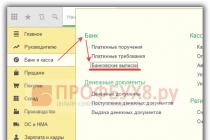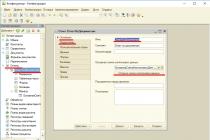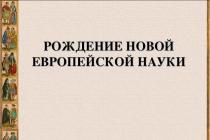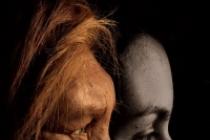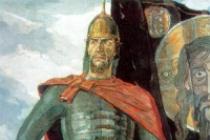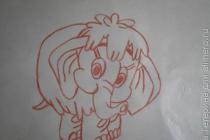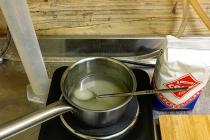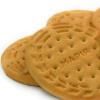Mental and physical development of the child
Mental and physical development of the child
Child development is a topic that occupies the minds of absolutely all parents. Many modern mothers and fathers are increasingly well aware of what stage their baby is at, what he should be able to do, and what “crisis” they can expect. Of course, every child develops in accordance with some general trend. But we should not forget that the development of children is very individual and what one child achieves with ease may cause difficulties for his peer; everyone grows and develops according to their own laws.
The physical development of a child is subject to biological laws, according to which the main peak of growth occurs in early childhood. It is known that in the first year of a baby’s life, his weight increases three times, and his height increases by about one and a half times. With age, a child's physical development slows down.
Have you noticed the disproportion of a child's body? Adults are particularly moved by the child's large head compared to his small body. The feet and hands grow just as quickly - this corresponds to the law according to which, first of all, the parts of the body that are farthest from the navel grow and develop.
Another law states that periods of rounding and elongation of the body naturally replace each other. The point is that at a certain age in children, traction occurs along different axes - either in an increase in the skeleton, or in an increase in muscle mass and the fat layer. There will be no trace left of a round tummy, chubby cheeks and fingers in children aged 3-5 years by the age of 11-12, after which active traction will begin. Body growth, as a rule, stops by 16-18 years. Of course, it is necessary to take into account that the physical development of girls and boys occurs differently - the growth spurt in girls most often occurs several years earlier than in boys.

An important task of parents throughout all periods of a child’s development is to pay sufficient attention to physical education. Daily walks and active games in the fresh air will bring only benefits to both the baby and parents. Every morning, try to devote 10-15 minutes to exercise, and you can start doing it with your baby from a very early age - doing gymnastics with your mother is a very special pleasure for a child!
Psychological development of the child
Infancy: child development up to one year
Infancy is the first stage of psychological maturation, which lasts from the birth of a child to one year. At this time, the baby develops at an incredible speed and in a short time goes through an amazing path from a helpless creature with innate reflexes to an active baby with the ability to listen, watch, perform the simplest actions, express his dissatisfaction and affection, demand attention and laugh.
1-12 months
At the age of about one month, the child begins to need to communicate. He begins to recognize his mother and reacts to her appearance with a smile. This period is also characterized by the appearance of the first sounds in the baby’s speech. Parents need to more often name the objects that surround the baby and comment on his actions. When the child learns to sit, you can try using salted play dough, finger paints, kinetic sand, various textures in games - all this will help in the development of fine motor skills and for the further development of speech.
Antonina Tsitsulina, an expert on the “I am a Parent” portal, president of the Association of Children’s Goods Industry Enterprises, and psychologist, talks about how to choose the right toys for a child aged from birth to one year.
Crisis of one year
The logical conclusion of this stage is the “one year crisis” - the child’s transition from the state of “we” to the state of “myself” and “mother”. The main points characterizing this crisis are the formation of walking, the development of speech and the appearance of the first acts of protest - opposing oneself to others. It is important for parents to learn to remain calm, be patient, and begin to gently and kindly introduce prohibitions. You need to start explaining to your baby what objects and situations are fraught with danger, and try to redirect his attention. But, in order for the prohibitions to work, it is necessary to introduce them in portions and not overuse the word “impossible.”
Early childhood: child development from one to four years
The age from one to four years is usually classified as the primary preschool period. It is filled with contradictions. On the one hand, the child becomes more independent, on the other hand, he cannot do without his parents, and all his discoveries occur mainly in joint activities with an adult.
At this age, balance is extremely important for development. Try to give your child more independence and encourage initiative. Don’t do “for him,” even when it seems that his actions are useless and doomed to failure - the little person may develop a feeling of self-doubt. But if the child himself asks you for support and help, it is absolutely impossible to refuse and say that he can easily cope on his own. The baby may lose interest in what he is not good at doing on his own.
The most important new developments of this time are upright walking, mastery of speech and objective activities. Towards the end of early childhood, the child’s first own compositions appear - fairy tales, stories, for which parents must praise the child! During this period, you should try to talk to your children as much as possible and listen to them with due attention.
Crisis of three years
The final point of this period is often the “three-year crisis,” which is also called a relationship crisis. For some it proceeds almost unnoticed, while for others it suffers greatly. Its reasons lie in the internal contradiction of the needs to act independently and meet the requirements of an adult, the discrepancy between the actual “I want” and “I can” of the child. This stage of child development is characterized by such manifestations as stubbornness associated with a tendency towards independence, self-will, obstinacy, devaluation of adult demands, conflicts with parents, often turning into a protest against existing rules.
The main thing that mothers and fathers should remember during this period is that the baby is also not comfortable now, he needs support and care. We must try to remain calm and confident, and remember that this is a natural stage, without which the formation of a child’s personality is not possible! There is no need to focus on the child’s negative manifestations, but you should definitely praise the behavior that you want to achieve in the end. A good way out is to wait out the hysteria, or switch the child’s attention to something else. Instead of telling your child what it is better not to do, try to give him a choice and better avoid situations where he can answer “no”.
Toys are an important regulator of the mental development of children aged two to three years. Psychologist Antonina Tsytsulina shares her opinion about what toys a child should buy during this age period.
Senior preschool age: child development from five to six years
The age of five to six years is the period of senior preschool age. The baby, as a rule, by this time already goes to kindergarten, and active preparation for entering school begins. The child becomes even more independent. The emotional, intellectual and moral-volitional spheres of the personality develop significantly. The leading activity remains gaming, which means that the main tool for education, development and knowledge of the world around us is a role-playing game. The child experiments, tries different models of behavior and draws conclusions based on his observations, learns to obey social norms and requirements. The need for communication with peers increases, it becomes more meaningful.
By the end of preschool age, children form an opinion about themselves. The child’s self-esteem is usually high, this helps him feel confident and competent in new activities and develop further. At this age, parents need to pay special attention to the child’s speech development. You should read more together, discuss the books you’ve read, encourage your child to give a detailed retelling, you can play theater, read fairy tales by role, experiment with voice timbre and intonation. You need to continue to play with your child, because play is precisely the type of activity in which an adult fully realizes his parental potential.
Junior school age: child development from six to 11 years
Seven Years Crisis
At the age of six or seven, children enter first grade, and this marks the beginning of the school period, which lasts throughout primary school until the age of 10-11. At this moment, the child’s attention shifts from parents to teachers, close adults cease to be the only authority, and study becomes the leading activity. Here parents are faced with another “crisis of seven years,” which psychologists call “the stage of the birth of the child’s social “I.” During this period, intelligence, memory and planning ability develop most rapidly. Self-esteem often decreases because the child already largely evaluates himself based on the teacher’s opinion of him and the results achieved in learning.
Parents should pay very close attention to this period and try to support the baby in everything, praise more, and avoid criticism. After all, a junior schoolchild does not yet have much experience in long-term struggle for an intended goal, overcoming difficulties and obstacles. He may give up if he fails, lose faith in his strength and self-confidence, and, consequently, lose interest in studying. Consistency should be maintained in establishing rules and observing them; they should not change depending on mood, well-being or weather and be as constant as possible. You should not ignore your child’s numerous questions; it is better to involve him in discussing various situations and show how important he is to you.
Adolescent development
At the age of 11, adolescence begins. It is characterized by a number of physical and psychological changes associated with puberty. At this stage, the personality changes radically, its rebirth occurs.
Maria Merolaeva
Giving an objective assessment of the physical development of children in the first year of life and his psychological state, as well as in order to track the dynamics of the baby’s physiological and psycho-emotional development month by month, neonatologists and pediatricians operate with several objective indicators. Among them are the anthropometric data of the newborn, psychomotor factors, memory, speech potential and speed of thinking.
Indicators of child development in the first year of life: weight gain and height
To assess the physical development of children in the first year of life, anthropometry is used - a research method based on measuring and assessing signs of child development.
The physical development of a child is assessed by systematically determining weight, height, head circumference, chest, calculating the ratio of these indicators to each other and comparing them with age norms.
Body weight is determined using medical scales in the morning on an empty stomach (preferably without clothes). To measure the weight of a child in the first year of life, special scales are used.
Height is measured using a stadiometer. For children under one year of age, a horizontal stadiometer is used. When measuring the height of a child in the first year of life, the baby is placed so that the head fits tightly to the head end of the measuring device. The child's legs are straightened by pressing on his knees, while moving the mobile stand.
Measuring body weight. A child is born with an average weight of 2800-4000 g.
The normal body weight of a child in the first 6 months of life is determined by the formula:
Birth weight plus 800 times number of months to live:
M = Mr + (800 x n).
In the second half of the year, for children of the first year of life, the formula for weight gain changes slightly:
M = Мр + (800 x 6) + 400 (n - 6), where M is body weight; Mr - birth weight; n is the number of months of life.
Height measurement. The height of a newborn is on average 50 cm. In the first three months of life, it increases by 2 cm. From the third to the sixth month of the child’s first year, height increases by 2.5 cm every month. From the sixth to the ninth month - 1.5 cm per month. From nine to twelve months - 1 cm. The normal height of a one-year-old child is 75 cm.
Developmental norms for children in the first year of life: chest and head circumference
When talking about the development standards of children in the first year of life, the circumference of the chest and head must be taken into account.
Chest circumference measurement. Measurement of chest circumference in young children is carried out in a lying position.
To measure the chest circumference in children under one year old, a centimeter tape is applied at the back at the angles of the shoulder blades, and at the front - on the areola circles. The measurement is carried out twice: during inhalation and during exhalation, taking into account the excursion of the chest.
The normal chest circumference in children at birth is 33-34 cm, by 6 months it reaches 45 cm.
Chest dimensions in children under 6 months:
OG = 45- (2 x n).
After six months, the chest circumference is:
OG = 45+ (2×0.5 n), where OG is chest circumference; n is the number of months lived.
Measuring head circumference. To measure head circumference in children under one year old, a centimeter tape is placed on the protruding part of the back of the head, and in front passes along the brow ridges. At birth, a child’s head circumference is normally 34-36 cm. At 6 months it reaches 43 cm, at 8 months - 44 cm.
To determine the head circumference of a child under 5 years old, take a total value of 50 cm and subtract 1 cm for each missing year.
The above formulas give average indicators of the physical development of children in the first year of life; assessment using special tables is more accurate. The main task in this case is to determine from the tables which interval the measurement values fall into. Depending on the magnitude of these indicators, a conclusion is made about the harmony or disharmony of the child’s development.
Characteristics of psychomotor and emotional development of children during the first year of life
 The dynamics of psychomotor development of children in the first year of life gives an idea of the progression of intellectual potential and motor skills depending on age, innate qualities and the child’s reactions that provide a connection with the external environment.
The dynamics of psychomotor development of children in the first year of life gives an idea of the progression of intellectual potential and motor skills depending on age, innate qualities and the child’s reactions that provide a connection with the external environment.
The baby develops especially rapidly in the first two years of life.
First week of life.
During the first week of life, the child is constantly in a characteristic position (fetal position): arms are bent at all joints, brought to the body, fingers clenched into fists; legs are bent and slightly abducted at the hips.
First month of life.
Motor development. In the first month of life, the newborn still retains the posture characteristic of the intrauterine period, this is due to increased tone of the limbs. The development of motor skills in children of the first year of life during this period is of a reflexive-stereotypical nature, movements are not interrelated.
Psycho-emotional development. It is typical for this age that any irritation quickly leads to inhibition of the cerebral cortex and, consequently, falling asleep. Sleep takes up to 20-22 hours per day. The baby's reaction to the world around him is determined by unconditioned reflexes: food, protective, orienting. A newborn perceives the influence of the environment through tactile, sound, and taste analyzers. Mental development in the first year of life during this period is such that in response to severe irritation, the child reacts with anxiety, screaming, and crying.
One of the first to form is the food reflex. Even before applying to the breast, the baby makes sucking movements.
Second month of life.
Motor development. The child is able to hold his head up independently, makes many movements while lying down, tries to roll over onto his stomach, lies on his stomach, and rises high on his arms. The baby reaches for objects and holds them if you put them in his hand. By the end of the second month, the fists unclench, and the baby is held in a vertical position (in the arms of an adult) for at least 30 seconds (maybe not quite confidently, swaying a little, but held). The development of a child in the first year of life during this period allows him, in a position on his stomach, to raise his head 10-15 cm from the table and hold it for 30-60 seconds. The tone of the flexor muscles gradually decreases, and the number of voluntary movements increases: the child can move his arms to the sides, raise them above the horizontal level.
Psycho-emotional development. The baby feels comfortable in his mother's arms, he makes himself known when he feels discomfort, calmly treats all movements, observing what is happening around him. He examines the surrounding objects with interest, reaches out to them, examines his hands, sucks his fists, and feels his stomach.
The mental development of children of the first year of life progresses in the second month: the baby makes attempts to attract the attention of adults, shows joy (smiles), indignation, and flirts.
The first 12 weeks for the baby are critical: all new! During this time, the child is required to adapt to extrauterine living conditions. If this happens normally, then by the end of the critical period the baby begins to react to a shiny object (fixes his gaze and follows the object with his eyes alone, without turning his head), shudders and blinks at a sharp sound, lies on his stomach, and can turn his head towards the light.
A child at this age has 5 periods of sleep, two of them long, the rest short. Long night sleep, but with breaks for feeding, lasts up to 10 hours. By paying close attention to the development of a child in the first year of life, already during this period you can determine whether the baby will be a “night owl” or a “lark.” The latter fall asleep at 19-21 o'clock, wake up at 6-8 o'clock, and owls go to bed at 23-1 o'clock, wake up at 10-12 o'clock in the afternoon. The baby may exhibit increased sensitivity to weather changes, changes in the phases of the moon in the form of increased activity, drowsiness, and unreasonable crying.
Speech development. The child reacts to speech addressed to him, tries to walk, distinguishes speech intonations, tries to “talk”, repeating individual sounds after his parents.
Third month of life.
 Motor development. The child makes attempts to stand up with the support grasped, stands with the support of the armpits (stands with the support of the armpits on straightened legs for at least 30 seconds), while “stomping” with his legs. Sits on his arms, tries to roll over onto his back from a position lying on his stomach, tries to roll over on his side on his own. A child with normal developmental indicators in the first year of life, already during this period, lying on his stomach, leaning on his forearms, can raise his torso 10-15 cm from the table within 30-60 seconds.
Motor development. The child makes attempts to stand up with the support grasped, stands with the support of the armpits (stands with the support of the armpits on straightened legs for at least 30 seconds), while “stomping” with his legs. Sits on his arms, tries to roll over onto his back from a position lying on his stomach, tries to roll over on his side on his own. A child with normal developmental indicators in the first year of life, already during this period, lying on his stomach, leaning on his forearms, can raise his torso 10-15 cm from the table within 30-60 seconds.
The baby is already able to grasp small objects with his hands. His contact with the environment continues to improve: from any position, the child can fix his gaze on a stationary object, turns his head towards his mother’s voice, closely examines her face and the toy placed in his hand, and pulls the toy into his mouth.
Psycho-emotional development. The baby is able to study independently for 10-15 minutes. Being held, he gets acquainted with the situation and the surrounding world, follows moving objects with his eyes. He studies his body, feels its individual parts, bites his fists.
Crying is accompanied by tears; when addressed, the child smiles or laughs, understands the intonation of the voices of those around him, flirts with them, and makes grimaces. He knows his loved ones by sight, is wary of strangers, and may even cry at the sight of them. The psychological development of a child of the first year of life, already at this age, allows the baby to let the baby know about all his needs with separate sounds: the baby begins to cry when he wants to eat, sleep when something hurts, and begins to walk if he needs communication.
By this time, the number of feedings is regulated, a long night break appears between them; During feedings, the baby covers the mother's chest or horn with his hands.
Night sleep lasts 9-10 hours. Daytime sleep becomes 3-4 times a day, he sleeps 2 times for 1-2 hours, short sleep does not exceed 20-40 minutes.
The baby may experience a reaction to changes in weather conditions in the form of restless or prolonged sleep, and moodiness.
Fourth month of life.
Motor development. Features of the physical development of a child of the first year of life in the fourth month appear especially clearly. The baby already knows how to roll over from lying on his back to his stomach and vice versa. Lying on his stomach, he can move in a circle, learns to get up on all fours, tries to sit down and even stand up, holding the fingers of an adult, but without support he cannot do this, although the baby strives to take a vertical position. With support from both hands, he sits, actively holding himself, for at least 30 seconds (sitting independently is prohibited for up to 6 months!). He confidently takes toys and moves them from hand to hand.
Psycho-emotional development. At the fourth month, the baby can already laugh loudly, turn in the direction of the sound, and distinguish the intonations of the voice. And the main thing that is worth saying about the emotional development of a child in the first year of life during this period is that the baby begins to recognize his mother. The child devotes a lot of time to independent study with objects. During communication, he tries to pronounce sounds and syllables - “humming” - speech appears. With gestures, he tries to express his need for communication - he stretches out his hands to his mother so that she can take him, and begins to look closely at the actions of adults. Tries to set his own feeding schedule.
The daytime rest regime is changing due to the transition to three naps a day.
The baby is capricious when the weather changes.
Development of motor skills in children of the first year of life from 5 to 8 months
 The following describes how a child develops in the first year of life from the 5th to the 8th month.
The following describes how a child develops in the first year of life from the 5th to the 8th month.
Fifth month of life.
Motor development. The child sits without support (steadily for at least 30 seconds), learns to crawl, often gets on all fours, but mostly tries to crawl backwards. Turns independently from stomach to back and from back to stomach. Lying on your stomach, lean on your straightened arms and hold in this position for at least 30 seconds. Transfers body weight from one hand to the other. Lying on his back, he plays with his feet. The main feature of the development of a child of the first year of life in the fifth month is the first attempts to stand up while in the mother’s arms or holding the sides of the crib.
Psycho-emotional development. The baby is very interested in toys, grabs those that he can reach, and actively plays with them on his own. Throws objects and follows them with his eyes. He has favorite and unloved toys. He reacts to the intonation of speech, as well as to the names of his favorite toys. When asked simple questions, he can look for his mother or his favorite toy with his eyes. Positive emotions are accompanied by melodious sounds.
The child studies the faces around him with interest. A remarkable characteristic of the development of children of the first year of life in the fifth month is the emergence of caution and distrust of strangers.
Sixth month of life.
Motor development. The child begins to sit independently, can kneel, can crawl, and tries to hold a cup or spoon in his hands on his own. Walks with support under the arms for at least 5 steps. Takes a toy from any position, while trying to reach it if it is out of reach.
Psycho-emotional development. The baby plays with toys for a long time, tries to throw objects and tries to watch them fall, knocks objects, listens to sounds. Features of the development of a child of the first year of life at this age are the manifestation of perseverance in achieving the goal. The baby tries to babble, for example, “yes, yes, yes.” During this period, the child begins to respond to his name and can distinguish his parents from strangers. His sleep-wake schedule is established, daytime sleep is shortened to 2 hours, sometimes less (30 minutes). The reaction to the weather remains; on cloudy days, children sleep longer.
Seventh month of life. This period is marked by getting up on all fours: the baby is stable in this position for at least 10 seconds. From a position on his stomach he tries to sit up on his own. With support from hands, he gets up and can stand for some time. Actively “works” with his hands: extends them to mom or dad, transfers a toy from one hand to another, pats a toy against a toy, can hold a crust of bread in his hand and eat it independently.
Eighth month of life. The development of a child during the first year of life in the eighth month gains momentum. The baby is already sitting firmly without support or support, crawling (on his stomach or all fours) for at least 1 m. He tries to attract the attention of his parents (close people), and may be scared of strangers. To the question “where?” finds a toy or other object, shows interest in unfamiliar things (toys). He plays “okay” and waves his hand “goodbye”.
How should a child develop by month to one year?
 In this section of the article you will learn how a child should develop month by month from the 33rd week until he reaches one year.
In this section of the article you will learn how a child should develop month by month from the 33rd week until he reaches one year.
Ninth month of life.
By nine months, all movements become coordinated, the baby can imitate adults. Stands with the support of one hand on straight legs for at least 30 seconds, sits down independently (from a lying and standing position) and lies down (from a sitting position). Stands up, holding a fixed support with both hands, steps at least 1 m. Takes small objects with fingers, takes toys out of a box, can catch a moving object (ball), watches thrown toys.
Tenth month of life.
The child moves on all fours along the steps of the stairs. Holding onto a movable support (walker), he walks for at least 2-3 m. He eats with a spoon with the help of adults, says “mom”, “dad”, “baba” (separate words), understands prohibitions. Gives a familiar object at the request of adults, drinks from a cup.
Eleventh to twelfth months of life.
From eleven months to one year: stands without support or support for at least 30 seconds, walks with hand support for at least 10 steps. Moves perfectly on all fours (raising his stomach off the floor). Tries to take independent steps (frequently falls). Can grasp an object with two fingers - thumb and index or thumb and middle. To pick up a toy from the floor, he squats. Plays with blocks, builds pyramids, drinks from a cup, knows the names of objects and speaks individual words.
During the second half of a child’s life, a conditioned grasping reflex is formed, and a second signaling system begins to quickly form. He begins to express both positive and negative emotions. In addition, the baby actively studies objects, knows their location, gets acquainted with the properties of things, and grabs those that he can reach.
Gradually, the baby masters the space around him. He scatters things and tries to put them back in place, explores the properties of water, tries to grab a stream of water. Among his activities, he likes to play with dishes and rattle toys.
The child distinguishes body parts and can show them. Gradually, the babbling becomes clearer, the baby begins to pronounce monosyllabic words at first, and by the age of 1 year he can pronounce several simple words. He likes to listen to simple fairy tales.
Sleep patterns change: The child sleeps 1-2 times during the day.
Now you have a fairly complete understanding of the development of a child in the first year of life month by month regarding motor skills and psycho-emotional factors, then you will learn about the development of speech and intelligence in babies.
Intellectual and speech development of a newborn child in the first year of life
 How does a child develop in the months after birth in terms of speech and intellectual abilities?
How does a child develop in the months after birth in terms of speech and intellectual abilities?
First month of life.
Speech. By the end of the first month, rare guttural sounds may turn into something similar to “aha” (the baby is “booming”). The child reacts to other people's voices.
Memory. Some babies begin to expect feedings at certain intervals.
Second month of life.
Understanding. The child forms simple associations: if you start screaming, they will pick you up. The reaction to external stimuli increases.
Speech. The baby communicates mainly by crying. As speech develops in children of the first year of life in the second month, sounds become more and more like vowels, for example “oo-oo” and “a-a”.
Third month of life.
Understanding. The baby can react to the reflection seen in the mirror with a smile. He breaks away from his mother's breast to listen to the voices of his parents.
Speech. Whimpers, whines, squeals, laughs. The speech development of children of the first year of life in the third month is not yet perfect; they can only make gurgling guttural sounds. Starts making sounds when he hears speech.
Fourth month of life.
Understanding. The child can sense unfamiliar places and unfamiliar people.
Speech. The baby mumbles something under his breath or to others. May raise his voice as if asking a question.
Memory. Distinguishes who is who in his life. Can recognize mother in a group of people.
Features of the development of speech and psyche in children of the first year of life
 How does a newborn develop by month from the fifth to the eighth?
How does a newborn develop by month from the fifth to the eighth?
Fifth month of life.
Understanding. A child may drop an object in order to watch one of the parents pick it up. Tracks where an object comes from and where it falls.
Speech. Carefully watches the lips of the speaker and tries to imitate voice modulations. May begin to pronounce consonant sounds such as “m” or “b.”
Memory. The baby can expect the appearance of a new object after seeing only part of it.
Sixth month of life.
Understanding. The child begins to guess about cause and effect: if you shake a toy, it will rattle.
Speech. Learns to make new sounds by changing the shape of the lips.
Seventh month of life.
Understanding. The baby can begin to sort toys such as blocks by size.
Speech. The child is able to make several sounds with one exhalation. It distinguishes between intonations and voice modulations.
Memory. Memory develops by playing hide and seek and observing the actions of other people.
Eighth month of life.
Speech. The child begins to imitate an increasing number of sounds. Reacts to familiar sounds by turning the head and body.
Memory. Remembers how to respond to certain phrases: raises his hands when he hears the expression “so big.”
How a newborn baby develops after birth from the 9th month to one year
 And in conclusion, you will learn how the child develops by month, from the ninth to the twelfth.
And in conclusion, you will learn how the child develops by month, from the ninth to the twelfth.
Ninth month of life.
Speech. May respond to his name and individual words, such as the word “no.” Likes to pretend to cough.
Memory. Notices when someone leaves the room and waits for their return.
Tenth month of life.
Understanding. The child is able to determine the height and edges of objects.
Speech. The baby accompanies the words with gestures: saying: “Bye,” waving his hand or shaking his head, answering: “No.”
Eleventh month of life.
Speech. Imitates sounds and actions, knows the meaning of words, listening to their use in various situations.
Twelfth month of life.
Speech. The baby can pronounce short sentences that only he can understand. Better control of intonation and pronunciation. Can pronounce from 2 to 8 words like “av-av” or “give”.
The degree of development of the psyche of a child in the first year of life and his psychomotor skills can be determined by careful observation of the child’s visual, auditory reactions, and his play activities.
To identify impaired cognitive function, it is taken into account that during certain periods the baby must:
- by 2 months of age - smile;
- by 3 months of age - react differently to the presence of loved ones and strangers;
- by 6 months of age - follow moving objects;
- by 8 months of age - distinguish between loved ones and strangers by their faces;
- by 9 months of age - be able to play hide and seek;
- at 1 year - be able to find a hidden object.
Having a clear idea of how a child under one year of age is developing month by month, in the situation of receiving negative results from the above test control, parents should seek advice from a neurologist or neuropsychiatrist.
This article has been read 8,393 times.
Periods of childhood. Physical and neuropsychic development of children. Child - growth and development - age stage - morphological, physiological and psychological qualities The need to identify periods (stages) of development
The significance of the anatomical and physiological characteristics of each period: - scientifically based development of medical measures; - scientifically based development of social measures to protect the health and development of children; - adequate recommendations for lifestyle, nutrition, education; - adequate recommendations for disease prevention.
Periods of childhood: 1. The neonatal period – from the moment of birth to the 28th day of life. 2. Infancy period – from the 29th day of life to one year. 3. Pre-school or nursery period - from 1 year to 3 years. 4. Preschool period – from 3 to 7 years. 5. Junior school age – from 7 to 11 years. 6. Senior school age – from 12 to 17-18 years.
The neonatal period is divided: - early neonatal period; - late neonatal period. Early neonatal period – the period from the moment of ligation of the umbilical cord until the end of 7 days of life (168 hours). This period is the most critical for the child’s adaptation to extrauterine existence.
Physiological changes in the early neonatal period: - the beginning of pulmonary respiration; - functioning of the pulmonary circulation; - changes in energy metabolism and thermoregulation; - enteral nutrition of the child begins; - all body functions are in a state of unstable equilibrium; - adaptation mechanisms are easily disrupted, which significantly affects the general condition of the newborn
Late neonatal period covers 21 days (from 8 to 28 days of the child’s life). Characteristics of the period: - intensive development of analyzers (primarily visual); - the beginning of the development of coordination of movements; - formation of conditioned reflexes; - the emergence of emotional, visual and tactile contacts with the mother; - around 3 weeks of age, children begin to respond to communication with a smile and facial expressions of joy (the beginning of the child’s mental life).
Infancy – from 29 days of life to a year. Characteristics: - the main stages of adaptation to extrauterine life are completed; - the breastfeeding mechanism is sufficiently formed; - very intensive physical, neuropsychic, motor and intellectual development of the child occurs.
Pre-school or nursery period – from one year to 3 years. Characteristics: - a slight decrease in the rate of physical development and a greater degree of maturity of the main physiological systems; - muscle mass increases rapidly; - the eruption of baby teeth ends; - motor capabilities are rapidly expanding; - all analyzers are intensively developing; - speech improves; - individual character traits and behavior are clearly defined.
Preschool period – from 3 to 7 years. Characteristics: - differentiation of the structure of various internal organs is underway; - intelligence develops intensively, memory improves; - coordinated movements are improved; - individual interests and hobbies are formed; - the length of the limbs increases; - baby teeth gradually fall out, permanent teeth begin to grow
Junior school age – from 7 to 11 years: - baby teeth are replaced with permanent ones; - memory improves, - intelligence increases; - independence and strong-willed qualities are formed, the range of interests expands.
Senior school age – from 12 to 17-18 years. - the most difficult period of psychological development - the formation of will, consciousness, citizenship, morality. - characterized by a sharp change in the function of the endocrine glands. - period of sexual development and pubertal growth spurt
Physical development is the process of changing body size, physique, muscle strength and performance of the child’s body and compliance with their age norm. The physical development and growth of a child depends on a whole range of factors: - biological; - genetic; - socio-economic; - household; - nutritional.
Indicators of physical development that are usually considered by doctors in order to monitor the dynamics of growth and development processes include: - body length; - body mass; - chest circumference; - Head circumference. Along with these, other indicators can also be considered (for example, skin-fat folds; the circumference of individual parts of the body - thigh, lower leg, shoulder, etc.; the shape of the spine, the shape of the chest, the shape of the legs and feet, spirometry, dynamometry indicators , blood pressure).
Criteria for assessing physical development. In newborns and children of the first year of life, the following is measured: - lying body length; - body weight; - chest circumference; - Head circumference. For children from 1 to 7 years old, the following is measured: - body length; - body weight; - chest circumference; - head circumference (up to 3 years inclusive)
For children under 7 years old, the following is determined: - body length; - body weight; - chest circumference; - degree of fat deposition; - the shape of the spine; - chest shape; - shape of legs and feet.
For children over 7 years old, the following is measured: - standing body length; - body weight; - chest circumference (inhalation, exhalation, pause); - spirometry indicators; - dynamometry indicators; - back strength; - arterial pressure; - determine: the degree of muscle development; degree of puberty.
Laws of growth and weight of a child The body weight of a full-term newborn is 3200-3500g. In newborns, there is a transient loss of initial body weight: - deficiency of milk and water in the first days of life; - dehydration (loss of water through breathing and sweat). The maximum loss of initial body weight is usually observed on the 3-4th day, less often on the 5th and, as a rule, does not exceed 6%. Restoration of body weight usually occurs by 6-7 days.
For an approximate calculation of the required body weight in the first half of life, you can use the following formulas: 1. Body weight at birth + 800g×n, where n is the number of months during the 1st half of the year; 800g – average monthly weight gain during 1st half of the year. 2. Body weight of a 6 month old child. equal to 8000g, for each missing month 800g is deducted. 8000 - 800 (6-n)
For an approximate calculation of the required body weight in the second half of life, you can use the following formulas: 1. Body weight at birth + weight gain for the 2nd half of the year; (800×6) + 400 × (n – 6), where n is age in months; 400 – average monthly weight gain for the 2nd half of the year. 2. Body weight of a 6 month old child. equal to 8000g, for each subsequent month 400g is added. 8000+400 (n-6)
The body length of a full-term newborn ranges from 46 to 56 cm. First 3 months 3 cm; From 4 to 6 months. – 2.5 cm each; From 7 to 9 months. – 2 cm each; From 9 to 12 months. - 1.5-1 cm each. At the age of 1 year, height 75cm
Milk teeth erupt in the following periods: - central lower and upper incisors - in the period from 6 to 9 months; - lateral lower and upper incisors – from 9 to 12 months; In 1 year of life – 8 teeth.
Average gains in body weight and length in children of the first year of life
Total: 7150 25.0
Age 6 months. – weight 8 kg. Up to 6 months monthly increase 800g. Over 6 months – 400g
Physical development of children from 2 to 15 years old At the 2nd year of life, the child’s body weight increases by an average of 2.5 kg; At the 3rd year of life – by 2 kg; From 3 to 10 years, a child’s body weight increases on average by 2 kg annually; From 10 to 15 years – by 3-4 kg.
Approximately required body weight can be calculated using the formulas: 1. The body weight of a child aged 2-11 years is equal to: 10.5kg + 2n, where n is the age of the child under 11 years old; 10.5 kg is the average body weight of a one-year-old child. 2. At 10 years old, a child weighs 30 kg: over 10 years old - the annual increase is 4 kg.
After a year, the growth rate begins to slow down. During the 2nd and 3rd years, the growth increases are 12-13 and 7-8 cm, respectively, and then become relatively uniform. The cessation of growth, according to Tanner, occurs at the age of 17.5 years in boys, and at the age of 16.5 years in girls.
To roughly calculate body length in children older than one year, you can use a number of formulas: 1. A child aged 4 years has a height of 100 cm. If the age is less than 4 years, the height is: 100cm – 8 (4-n), where n is the number of years. If the age is over 4 years, the child’s height is: 100 + 6 (n-4), where n is the number of years. 2. The height of a child from 2 to 15 years old is determined based on the height of an 8-year-old child, equal to 130 cm. For each missing year, 7cm is subtracted from 130cm, and for each subsequent year, 5cm is added.
Teeth: after a year (14-16 months), small molars (front teeth) erupt, at 16-20 months. – fangs, at 20-24 months. - posterior small molars. By 2 years – 20 baby teeth. To determine the number of baby teeth that a child under 2 years of age should have, subtract 4 from the number of months of life.
After birth, the main anthropometric indicators are assessed using the corresponding sigma or centile type tables. The columns of centile tables show the quantitative boundaries of a trait in a certain proportion or percentage (percentile) of children of a given age and gender.
The attention group includes children with signs in the 3-10 and 90-97 percentile ranges, and the group requiring additional examination includes children with signs beyond the 3 and 97 percentile (diagnostic group). Each characteristic measured in a child (height, body weight, chest circumference) can be respectively placed in its own area or “corridor” of the centile scale in the corresponding table
In conclusion, an assessment of the level and harmony of physical development is given. The level of physical development is determined by growth child, which is one of the main indicators of health
General delay in physical development: From 0 to 3 percent I core - very short height From 3 to 10 percent II core - low growth Normal variant: From 10 to 25 percent III core - below average From 25 to 75 percent IV core - average From 75 up to 90 pepper V core - above average From 90 to 97 pepper VI core - high Very high: From 97 pepper VII core - very high
Growth indicators ± 10% of the value obtained from the formulas, physical development - average, more > 10% - above average, less< 10% - ниже среднего.
Average development time and possible boundaries of motor acts in children of the first year of life
|
Movement |
Average age of acquisition |
Possible boundaries |
|||||||
|
3-8 weeks |
|||||||||
|
4-11 weeks |
|||||||||
|
Holding the head |
1.5-3 months |
||||||||
|
Directional movements of the handles |
2.5-5.5 months |
||||||||
|
Flipping |
5 months |
3.5-6.5 months |
|||||||
|
6 months |
5.5-8 months |
||||||||
|
Crawl |
7 months |
5-9 months |
|||||||
|
Voluntary grasping |
8 months |
5.5-10.5 months |
|||||||
|
Getting up |
9 months |
6-11 months |
|||||||
|
Steps with support |
9.5 months |
6.5-12.5 months |
|||||||
|
Standing independently |
10.5 months |
8-13 months |
|||||||
|
Walking independently |
11.5 months |
9-14 months |
|||||||
Neuropsychic development of children
ASSESSMENT OF NEUROPSYCHIC DEVELOPMENT When characterizing the nervous system in pediatrics, two synonymous definitions are used: neuropsychic development (NPD) and psychomotor development (PMD). The criteria for assessing CPD are: - motor skills; - statics; - conditioned reflex activity (1 signal system); - speech (2 signal system); - higher nervous activity.
Motor skills(movement) is a purposeful, manipulative activity of a child. For a healthy newborn in a calm state, the so-called physiological muscle HYPERTONUS and against the background of this there is a flexion posture. Muscle hypertonicity is symmetrically expressed in all positions: on the stomach, back, in positions of lateral and vertical suspension. The arms are bent at all joints, adducted and pressed to the chest. The hands are bent into a fist, the thumbs are brought towards the palm. The legs are also bent at all joints and slightly abducted at the hips; dorsiflexion predominates in the feet. Even during sleep, the muscles do not relax.
The movements of the newborn are limited, chaotic, erratic, athetosis-like - trembling. Tremor and physiological muscle hypertonicity gradually fade away after the first month of life.
Subsequently, motor skills in a healthy child develop in the following order: 1) first, the movement of the eye muscles becomes coordinated (at 2-3 weeks), when the child fixes his gaze on a bright object; 2) turning the head after the toy indicates the development of the neck muscles
3) manual activity of the hands develops at 4 months of life: the child brings the upper limbs closer to the eyes and examines them, rubs the diaper, pillow. Movements become purposeful: the baby takes the toy with his hands (in the second half of the year he can take a bottle of milk himself and drink it, etc.); 4) at 4-5 months, coordination of the movement of the back muscles develops, which is manifested first by turning over from the back to the stomach, and at 5-6 months - from the stomach to the back;
5) when, by the end of the first year of life, the child himself goes for an interesting object to another corner of the room, then a sign of motor skills is not just the process of walking, but the coordinated, purposeful movement of all muscles in the required direction. The gradual timely development of motor skills in a person can be followed by observing the improvement of finger movements from the first grasp of a pencil by a child of the first year to manipulations in adults - drawing, playing the violin and piano, modeling, knitting, etc.
Statics- this is the fixation and holding of certain parts of the body in the required position. The first sign of static is head holding - appears in the second or third month life, V 3 months The child should be able to keep his head upright. The second sign isbaby sitting - developed in 6-7 months. In addition, at the 6th month the baby begins to crawl, and at the 7th month he crawls well. Third sign - the child is standing - in 9-10 months. Fourth sign - the baby walks - by the end of the first year of life.
Conditioned reflex activity - This is the child’s adequate response to irritating environmental factors and his own needs. The main reflex in a newborn is food dominant. It's time for feeding, the baby is hungry and he's crying - this is good. He sucked his mother's breast, ate, calmed down, and fell asleep. Towards the end of the first month, a few minutes after the start of feeding, there is a short pause - the baby carefully examines the mother’s face and feels the breast. In the second month, a smile forms, in the third, joyful movement of the limbs at the sight of the mother. All this indicates the formation of conditioned reflexes to external stimuli.
When assessing PMR, it must be remembered that signs are dynamic over time . those. At each age, each criterion manifests itself differently. For example. 1. If a 5-month-old child is shown a bright toy, he stops moving, opens his eyes wide, mouth - this is the so-called oral attention . In the same situation, at 8 months of life, the child should not open his mouth, but reach out for the toy with his hands. Having oral attention at baby To the end of the first year of life indicates delay of CPD.
2. The approach of a stranger, mother, father to a 4-5 month old child causes at him revitalization complex: joyful triumph on the face, a pronounced smile, the baby moves his arms and legs. At 8-9 months of life, when the mother appears, the child should reach out to her with his hands, and the baby reacts with fear and negativism to a stranger.
Before the end of the first year there is sensory speech: the baby’s understanding of individual words that sound from the outside. This is detected by turning the head, pulling the arms, etc. Speech appears in a child 4 -6 weeks when he starts calling. The pronunciation of the first sounds is called humming (a, gu-u, uh-uh, etc.). At 6 months, the child pronounces individual syllables (ba-ba-ba, ma-ma-ma, etc.), without understanding their meaning, which is called babbling. By the end of the first year of life, the baby’s vocabulary already contains 8-12 words, the meaning of which he understands (give, na, dad, mom, etc.). Among them there are onomatopoeias (am-am - eat, tick-tock - clock) B 2 year, the vocabulary reaches 300, short sentences appear.
Higher nervous activity. This criterion develops on the basis of the formation of the nervous system, the formation of all previous criteria, the upbringing and development of the child. It is a sign of the maturation of a person’s mental capacity and intelligence. The final conclusion about the state of higher nervous activity can be made at 5-6 years of age
To accurately assess the timeliness of development of CPD, depending on the age of the child, 6 stages are conventionally identified: Stage I - 0-1 month; II stage - 1-3 months; III stage - 3-6 months; IV stage - 6-9 months; Stage V - 9-12 months; VI stage - 1-3 of the year.
Psychomotor development of children in the first half of the year At the age of 2 months, the child is calmly awake, looks at the toys hanging above him for a long time, smiles when they talk to him, begins to hold or holds his head well. At 3 months, the child responds to speech addressed to him with a smile, sounds, and animated movements of his arms and legs. Lies on his stomach for a long time, supported by the armpits, firmly rests on his legs, bent at the hip joints, holds his head well. At 4 months he begins to walk, determines by sound the location of an object making a sound, and spends a long time occupied with toys hanging over the crib.
At 5 months, he walks for a long time, blows bubbles, recognizes people close to him, and distinguishes the intonation with which he is addressed. The movements of his hands are clear, he takes the rattle and holds it in his hand for a long time. Rolls over from back to stomach, rests firmly on legs, stands with support. At 6 months he begins to pronounce individual words (“ma”, “ba”, “da”, etc.). He freely takes a toy and plays with it for a long time. He turns over from his stomach to his back and begins to move around the playpen, crawling a little. When he sees food being offered, he opens his mouth and eats well from a spoon.
Psychomotor development of children in the second half of the year At 7 months, the child lies for a long time, playing with a rattle, knocking, waving it. Crawls well, sits down easily, holding on to an adult's fingers; stands holding onto the barrier. At 8 months, he loudly repeatedly pronounces various syllables, searches and finds objects with his eyes when they are named. Performs “okay” movements upon request. He taps the toys and examines them. He sits down, sits, lies down. Holding the barrier with his hands, he himself gets up, stands and steps along the barrier.
At 9 months, he responds to advances with “I’ll catch up, I’ll catch up,” plays hide and seek, and performs certain movements at the request of adults—“give me a pen,” “goodbye,” etc. He deals with different toys and objects in different ways. Walks freely, lightly holding on to objects, walks well with support from both arms, and follows a gurney. At 10 months, he knows the names of some objects and the names of people, and repeats various sounds and syllables after adults. At 11 months he performs simple tasks and plays with concentration; places one object on top of another, removes and puts on a ring, etc. Stands independently (without support), walks with minor assistance from adults.
|
Age |
|
|
1-1.5 months |
Humming: a-aa, e-ee, etc. |
|
2-3 months |
Humming: g-u, sh-i, boo-u, ee, etc. |
|
Pipe: al-le-e-ly-agy-ay, etc. |
|
|
7-8.5 months |
Babbling: pronounces syllables (ba-ba, da-da-da, etc.). Modulated babble - repeats syllables with a variety of intonations. |
|
Words: “ma-ma”, “pa-pa”, “te-cha”, etc. |
|
Onomatopoeic words: “av-av”, “tick-tock”, “mu-mu”, etc. All nouns are used in the nominative case, in the singular. |
|
|
Attempts to connect two words into a phrase (“Mom, give me!”). Imperative is acquired inflection of verbs (“go-go!”, “give-give!”, etc.), because it expresses the child's desire and has great meaning for him. |
|
|
Plural forms appear (since the difference between one subject and several are very visual). The dictionary reaches 300 words. |
|
|
Nouns make up ≈63%, verbs – 23%, other parts of speech – 14%. There are no unions. From 18 to 24 months. – the first period of questions “what is this?” |
|
|
Those grammatical forms appear that help the child navigate in relation to objects, space (cases), in time (verb tenses). The genitive case appears first, then the dative, instrumental and prepositional. However, complete mastery of case forms occurs much later. Verbose phrases and subordinate clauses appear; by the end of the year - connecting conjunctions and pronouns. |
|
|
Conditional form of subordinate clauses. Long phrases. Monologues. The final phrase in language development. The second period of asking “why?” |
Compared to other babies in the animal kingdom, a human child is born very immature. Neither physically nor mentally, a newborn is capable of independent life for a long time. Human maturation is a much longer process than the maturation of any other animal.
The physical development of the baby depends mainly on the conditions around him and his care. However, physical development alone is not enough to become a real part of society. Absorbing knowledge about the world around us and norms of behavior in society, personal development, determining one’s life path and interests - all this characterizes the mental development of a child, about which the story will go further.
What is meant by the neuropsychic development of a child?
The mental development of a child is the process of development of mental functions (attention, memory, sensations, perception, etc.) and the formation of the personality of a little man (formation of his ideas about himself and others, “absorption” of norms and values, choice of interests, laying and formation character, etc.).
Development will rightly be called “neuropsychic”, since the psyche has a really existing basis - the nervous system, to be more specific - the brain. The development of mental functions and the formation of the personality of a growing person is impossible without the development of various areas of the brain.
Stages of a child’s neuropsychic development
The baby’s psyche begins to develop when it enters the big world, and this development occurs in stages. Each stage has its own tasks; each stage of mental development ends with a crisis, during which a transition to a new branch of development occurs.
The stages of neuropsychic development are unevenly saturated with tasks: the most intensive development occurs in the early stages, and then the pace slows down.
- Infancy. The earliest stage of mental development, starting from the 2nd month of life and lasting up to 1 year. During this year, the child makes a breakthrough: from a helpless creature lying in a crib, he turns into a real person who can walk, pronounce words, drink from a mug, and play with toys. Of the mental functions in the first year of life, sensations, perceptions, etc. develop most actively. Memory and speech begin to form. In the sphere of personal development, infancy is the age when the most important element of a person’s entire future life is formed: attachment to parents. In the first year, it is simply vital for a child to feel the love, care, and warmth of the adults who are caring for him.
 Crisis of the 1st year. The result of all the skills and abilities that a child acquired during the first year of his life is his transition to a new level. The crisis of the 1st year is associated with the fact that the baby begins to physically separate from the mother. He no longer strives to constantly be in his arms: most children at this age are already stomping their feet, which means that the child becomes interested in exploring the world around him, because new opportunities have opened up for him in his life.
Crisis of the 1st year. The result of all the skills and abilities that a child acquired during the first year of his life is his transition to a new level. The crisis of the 1st year is associated with the fact that the baby begins to physically separate from the mother. He no longer strives to constantly be in his arms: most children at this age are already stomping their feet, which means that the child becomes interested in exploring the world around him, because new opportunities have opened up for him in his life.- Early age. This period lasts from 1 year to 3 years. Young children, they have (children and songs), they try to establish relationships with other children and adults. A game is born, which will then be the leading activity until school age. By the age of three, the core of the child’s personality is formed and he finally begins to feel like a separate person who has his own personal desires and aspirations.
- Crisis 3 years. This time often becomes difficult for the whole family, because the baby begins to declare his autonomy and sometimes does this very aggressively and persistently. The child begins to realize that he and his mother are not a single organism, that he has his own “wants” and needs. In order to feel this more acutely, the three-year-old begins to protest about any reason, just to show his own will and do it his own way.
- Preschool age. This is a fairly long period that lasts from 3 years to school. The key moment of preschool age is the development of the child, which occurs in play. With the help of games, children “try on” the roles of adults, try to cope with adult tasks, and get acquainted with professions. In addition, children learn to build relationships in a mini-society, since they have a lot of contact with other preschoolers and adults. They make friends, and such concepts as fidelity and devotion enter into life. Among mental functions, will actively develops. An older preschooler is already able to make volitional efforts to do the necessary things - this is a very important skill for future studies at school.
 Crisis 7 years. The fracture is associated with the new status into which the child enters. Until recently, he was a carefree kindergartener, and now he is at school, where he has a certain workload and responsibilities (going to class, doing homework, folding his briefcase, etc.). Formally, “adult” demands are placed on the child, but in fact he remains a child, and the crisis is associated with adaptation to the new role of a student.
Crisis 7 years. The fracture is associated with the new status into which the child enters. Until recently, he was a carefree kindergartener, and now he is at school, where he has a certain workload and responsibilities (going to class, doing homework, folding his briefcase, etc.). Formally, “adult” demands are placed on the child, but in fact he remains a child, and the crisis is associated with adaptation to the new role of a student.- School age. Studying at school is a time of active development of mental functions, but not “in breadth”, but “in depth”. Memory and thinking are at the peak of their development, because the child needs to remember and analyze a lot of new information. Personally, preparations for future adult life are in full swing. The orientation of the personality (interests, inclinations, abilities) is formed and manifested, the motivational-need sphere is formed, that is, the child begins to think and realize what he wants from life, make plans and think through their implementation. A huge role in the personal development of a student is played by peers and adults, who are the authority for the child.
- Adolescence crisis. This crisis does not have clear age boundaries; it usually occurs between the ages of 13 and 16. This is again a crisis of autonomy, the child once again strives to get out of the care of an adult and feel his independence. This time the child has much more opportunities, but also more responsibility, while he still remains a child in whose life adults decide a lot.
Factors in a child’s mental development
Factors in a child’s mental development are the reasons why that very development occurs. There are two leading factors that determine the neuropsychic development of children.

Developmental problems
The mental development of a child can be problematic. They may be associated with pathologies of the nervous system and sensory organs that arise in fetal development or as a result of injury. Under unfavorable social conditions, mental development may lag behind the norm. As a consequence, this follows in, etc.
The neuropsychological development of the child is monitored not only by parents, but also by neurologists, pediatricians, and then educators in preschool educational institutions and teachers at school. If any problems make themselves felt, you definitely need to work with them.
Psychologist-consultant
Natalia Starodubtseva
Details about the neuropsychological development of a child in the first year of life:
The period from 10 days to 1 year is called infancy.
The skin is very delicate and easily vulnerable. Due to imperfect thermoregulation, overheating or hypothermia of the body easily occurs.
The joints of the skull bones become stronger. By 1-2 months. The small fontanel closes, and by the year the large one closes. Their overgrowth too early, which occurs with metabolic pathologies, causes compression and subsequent deformation of the brain, and later (under certain conditions) contributes to hydrocephalus - dropsy of the brain.
Teething begins at 6-8 months. First, 2 lower teeth appear, then 2 upper ones, after them 2 more upper ones on the sides of the previous ones, and finally 2 lower ones on the sides of the previous lower ones, i.e. a one-year-old child should have 8 teeth.
The depth of breathing increases due to further development of the lungs.
The condition should be taken into account according to the following parameters: up to 3 months. the respiratory rate is 40-45 in 1 minute, in 4-6 months. - 35-40, at 7-12 months. - 30-35 breaths. In children under 1 year of age, there should be 3 pulse beats per breath.
At the age of up to 1 year, the mass of the heart increases rapidly.
The heart rate gradually decreases, reaching 125 beats per minute. Blood pressure, on the contrary, gradually increases to 90/63 mm Hg. Art.
The volume of the bladder increases, the walls become more elastic. By the end of the first year, the number of urinations decreases to 15-16 times a day.
Already at the very beginning of the infancy period, the child begins to fix his gaze on bright objects, when a feeling of hunger appears, he cries, sucks fingers, when the mother’s breast is close to him, he perks up, turns his head, makes sucking and swallowing movements. At this age, the muscles of the neck and back become stronger, and the child, lying on his stomach, briefly raises his head, and in an upright position holds it straight for several seconds. When you touch the soles of a child lying on his stomach, he pushes off with his legs and tries to crawl, and if you support him under the armpits, he leans on his legs.
At the end of the 1st month of life, the child tries to straighten his legs; at the 6th week, lifts and holds the head; sitting at 6 months; at the end of the 1st year he tries to take his first steps.
The child’s psyche develops no less intensively during this period.
1-2 months. Reaction of concentration to verbal communication with a child. Smile when communicating;
3 months. Animation complex (i.e. emotional-motor reaction) when communicating with adults. A vocal reaction specific to a given age appears, called humming (the first stage of babbling);
4 months. Differentiation of the revitalization complex, i.e. different reactions to different people you know. For example, a child distinguishes dad from mom. There is no reaction to strangers yet. Laughter appears. Takes toys into mouth, exploring them;
5 months. The child differentiates the directions of sound, i.e. looks for the source of sound and focuses attention on it, for example, on the face of the speaker. At this age, children begin to recognize non-speech sounds: the noise of a car, the rustling of trees, the barking of a dog;
6-7 months. The humming turns into babbling, i.e. repeated repetition of syllables: “ba-ba-ba”, “ma-ma-ma”. There is a readiness for joint gaming activities;
8-9 months. Reaction to an unfamiliar face. An intermediate stage between babbling and the appearance of the first words. Babbling comes down to words-like so-called. babbling words, no longer consisting of multiple repetitions, but of two open syllables: “ba-ba”, “pa-pa”. But the child does not yet correlate spoken words with people or objects. Communicate using gestures, play “okay”;
10-12 months. Situational understanding of addressed speech, objectively effective communication with adults, the use of 4-5 babbling words that are understandable when correlated with the situation, understanding of simple instructions supplemented by gestures;
The period from 1 to 3 years is called early childhood.
During this period, the child grows vigorously, eats the same food as adults, he manifests a desire for independent knowledge of the world, a craving for self-affirmation. At this age, the child begins to walk and masters various ways of manipulating objects. Many new motor skills appear. By the age of 3, the child masters all the basic movements (walking, running, climbing, throwing at a target, dancing movements) and fine finger movements. He acquires a lot of knowledge and ideas about surrounding objects, and is oriented in the shape, color, and size of objects. During the game, the child imitates the actions of adults.
The child stops turning to an adult for confirmation of the correctness of the action performed only when it has been mastered (the child masters it in independent activity), that is, when a model of action has already been built by the child. At all stages of its formation, the child constantly builds this pattern, and since the bearer of the pattern is an adult, the very process of forming a pattern of actions for the child has the meaning of his relationship with the adult. Even at the last stage of mastering action, when it seems that the child orients individual operations towards certain physical properties of the object, in reality the orientation is mediated by the relationship with the adult.
The child's body is developing rapidly. During the first three years of life, not only do all internal organs enlarge, but their functions also improve. All functions of the body are improved, including the conditioned reflex activity of the cortex and brain, all types of internal inhibition and dynamic stereotypes are formed, and by the end of the 1st year the second signaling system develops.
The main indicators of a child’s physical development are height, body weight and chest circumference.
Throughout early childhood, weight gain and growth fluctuate - in some periods the baby grows taller faster, and in others he gains weight faster. So, usually in the years from two to three years, the increase in the baby’s height is more noticeable (up to 15 cm in two years) than the increase in weight (up to 5 kg); therefore, sometimes it seems that the child is losing weight. Meanwhile, it is during these years that a noticeable accumulation of muscle strength begins, endurance increases, and mobility increases.
The muscular system in children is formed on the basis of the development of the nervous system and an increase in the mass of skeletal muscles, and this process occurs unevenly. At an early age, the child’s bones are rich in blood vessels and contain a small amount of salts. They are elastic, flexible, easily deformed and bent, since the skeletal system of 2-3 year old children has significant areas of cartilaginous tissue, weak, soft joints and ligaments. Babies do not yet have stable curves in the spine, which appear only by the age of 3.
The period of child development from 3 to 7 years is called the preschool period. During these years, further physical development and improvement of the child’s intellectual capabilities occur. His movements become free, he speaks well, the world of his sensations, experiences and ideas is richer and more diverse.
The increase in children's height during this period occurs unevenly - at first it slows down to 4-6 cm per year, and then in the 6-7th year of life it accelerates to 7-10 cm per year (the period of the so-called first physiological extension). During this period, it is especially important to correctly and deliberately influence the child, on the formation of his muscle and bone tissue, using physical education methods. By averaging the given figures, we can roughly assume that every year after the first year, the child’s height increases by 5 cm. Thus, the height of a preschool child can be approximately calculated using the formula: the height of a child at the age of one year + (5 cm X n), where n - child's age. If the height at 1 year is unknown, then the average height of a one-year-old child is taken for calculation as 75 cm.
Weight gain during the preschool period also occurs unevenly. In the 4th year the child gains about 1.6 kg, in the 5th year - about 2 kg, in the 6th year - 2.5 kg, i.e. on average 2 kg per year. Based on this, the weight of a preschool child can be approximately calculated using the formula: weight of a child at the age of one year + (2 kg X n), where n is the child’s age. If the weight of a child at 1 year is unknown, then the average weight of a one-year-old child is taken for calculation as 10 kg. By the age of 6-7 years, the child should double the weight that he had at the age of one.
The skin at this age becomes increasingly thicker, becomes more elastic, the number of blood vessels in it decreases, and the skin becomes more resistant to mechanical stress. Skin surface per 1 kg Children under 6-7 years of age weigh more than adults, so they can easily overheat or become hypothermic.
By the age of 5-6 years, the child’s spine corresponds to the shape of an adult. However, the ossification of the skeleton at this age is not complete; there is still a lot of cartilaginous tissue in it. Children during this period are very mobile, their muscular system is rapidly developing, which causes a significant load on the child’s skeleton. Therefore, constant monitoring of the child’s posture, movements and games is necessary. At the same time, the impact of physical culture methods on this development process is also important. The child's bed should not be too soft or uneven; he should only use children's furniture.
It is important that physical activity at this age is necessary, but it must be feasible, and it is necessary to accustom one to it during physical education gradually and carefully.
At the end of preschool age, the formation of the respiratory organs ends. The ribs gradually take on the same arrangement as in adults, and respiratory muscles and lung tissue develop. Breathing becomes increasingly deeper and rarer - by the age of 7, the respiratory rate is 23-25 per minute.
The cardiovascular system also undergoes significant development, becoming more efficient and resilient. The mass of the heart and the strength of its contractions increase, it better adapts to physical activity. loads The shape of the heart and its location become almost the same as in adults. The pulse gradually decreases - by the age of 5 to 100 beats per minute, by the age of 7 - to 85-90 beats per minute.
It should be remembered that the adaptive (adaptive) capabilities of both the respiratory organs and the cardiovascular system in preschool age are much lower than in adults. Therefore, physical exercises for children should be strictly dosed in accordance with their age. It is unacceptable, for example, when on a walk an adult walks at his usual pace, and a child has to run, barely keeping up with him.
Neuropsychic development, which is also important to focus on in the process of physical education and the formation of a healthy lifestyle of a preschooler, reaches a significant level. The child's intellectual behavior improves significantly. Vocabulary gradually increases to 2000 words or more. In conversation, children use complex phrases and sentences; love to listen to adults read, easily memorize poetry, can write a short story about a walk; They confidently begin to hold a pencil in their hands and draw various objects and animals. The child already quite clearly expresses various emotions - joy, sadness, pity, fear, embarrassment. At this age, character traits are determined and developed, moral concepts and ideas about responsibilities are formed. Children repeat many of the actions of adults, so adults themselves must strictly fulfill all the requirements they place on the child.

